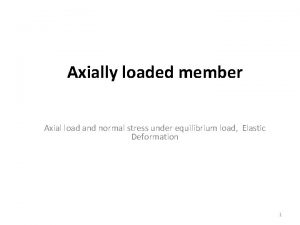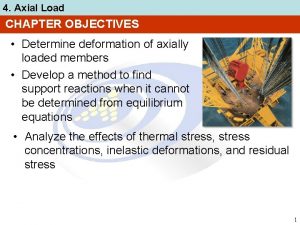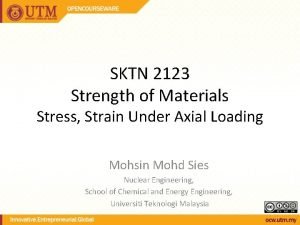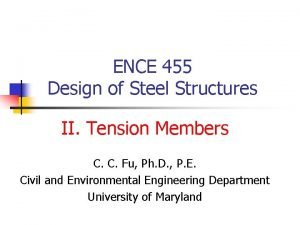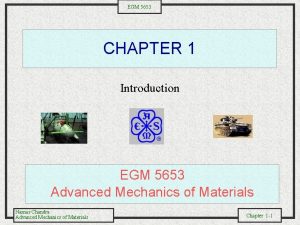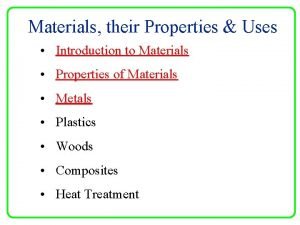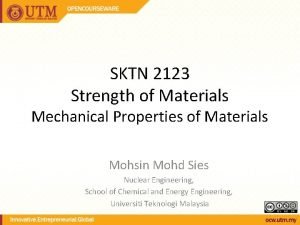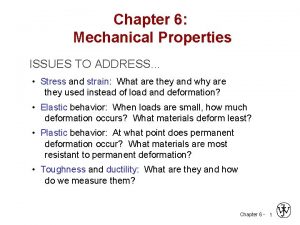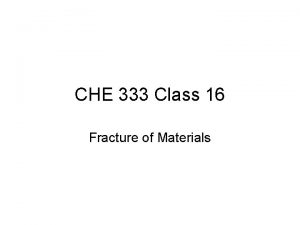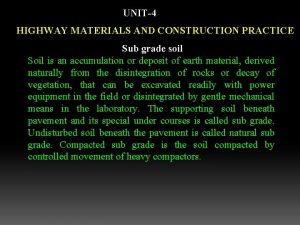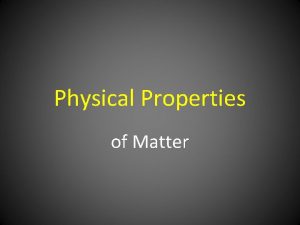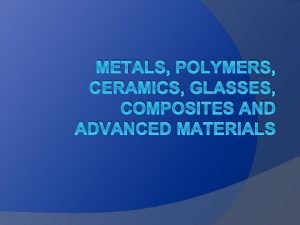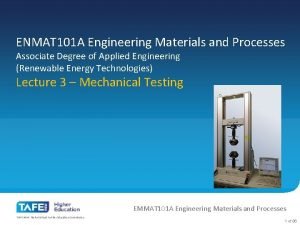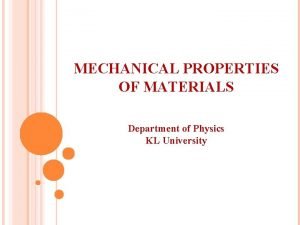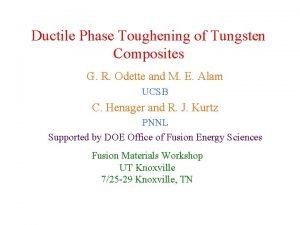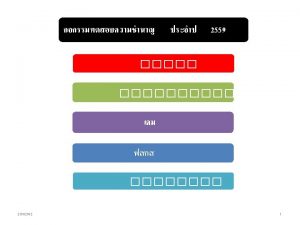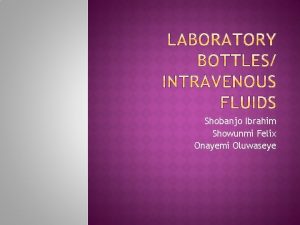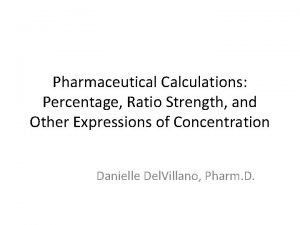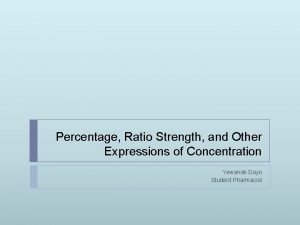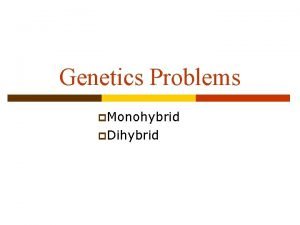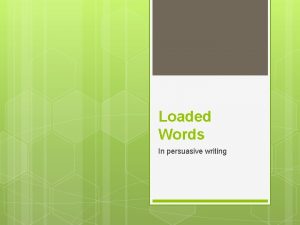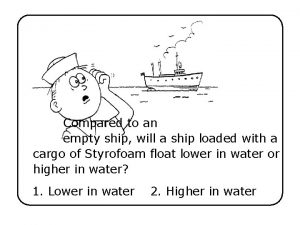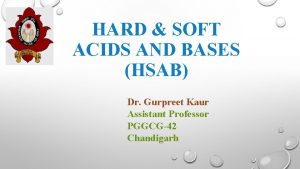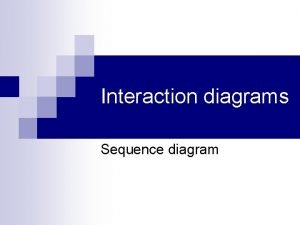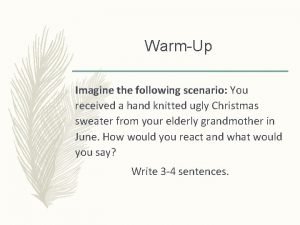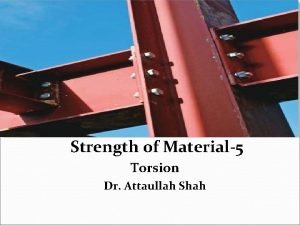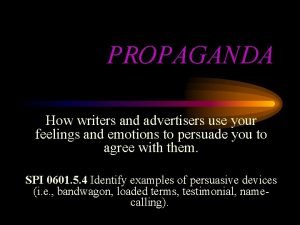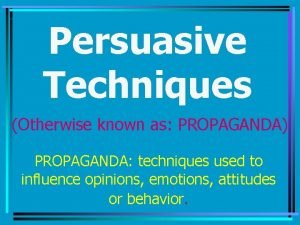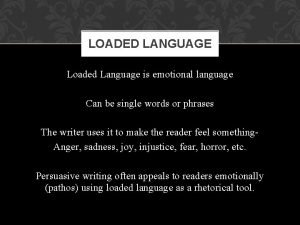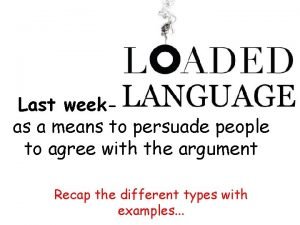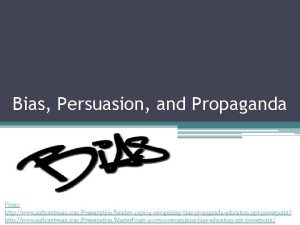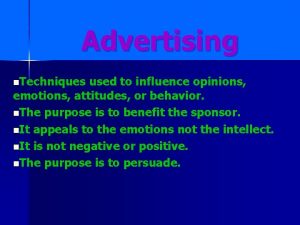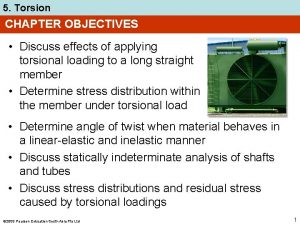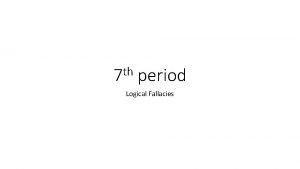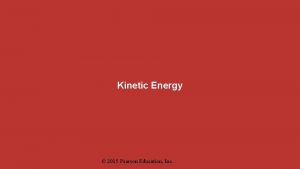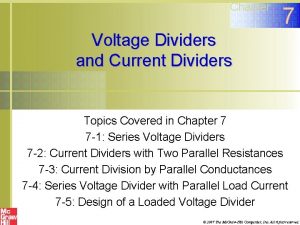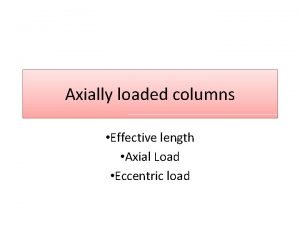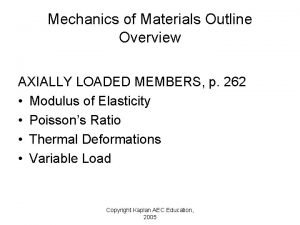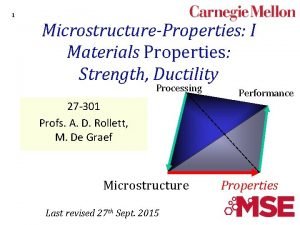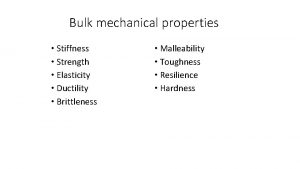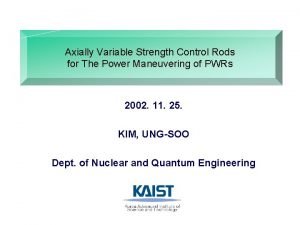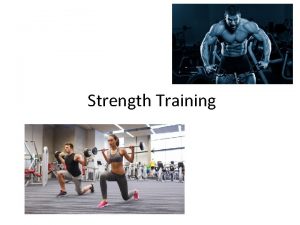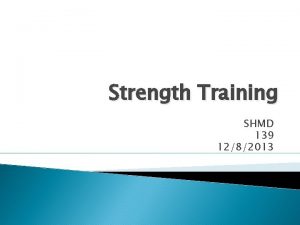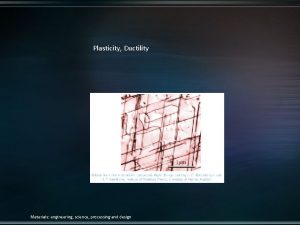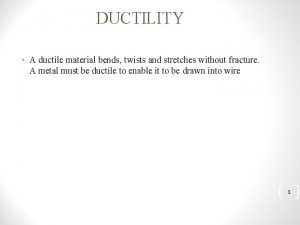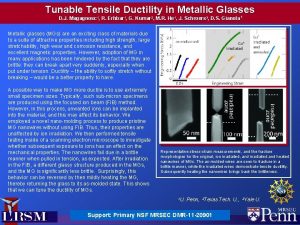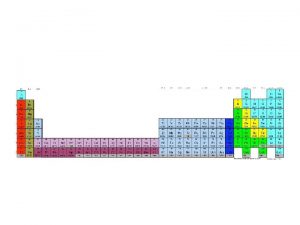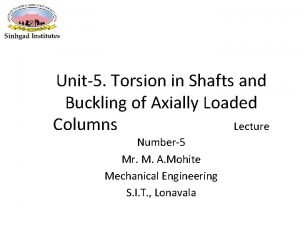STRENGTH AND DUCTILITY OF AXIALLY LOADED RC SHORT

















































- Slides: 49

STRENGTH AND DUCTILITY OF AXIALLY LOADED RC SHORT COLUMN CONFINED WITH CFRP AND GFRP Thesis Defense Haider Osamah Al-Karaghool Supervised by: Dr. Adil K. Al-Tamimi Dr. Jamal A. Abdalla

OUTLINE • Introduction • Research Objectives and Significance • Literature Review • Experimental Program • Discussion of Results • Conclusion

Introduction Research Objective & Significance Literature Review Experimental Setup Discussion of Results Conclusion Introduction Construction Industry vs. Technology New Building vs. Old Buildings Environ. Friendly Energy Conservative Less Carbon Footprint Enhanced Life Expectancy Change in the structure • Dead Load, Live Load, Load path, New building requirements Degradation of a structure • Corrosion, Fatigue, Design Errors, Hazardous Factors The need for safe building!!!

Introduction Research Objective & Significance Introduction Literature Review Experimental Setup Discussion of Results Conclusion Fiber Reinforced Polymer (FRP)-Defenition A composite material made of a polymer matrix reinforced with fibres. Types AFRP CFRP GFRP

Introduction Research Objective & Significance Literature Review Introduction Experimental Setup Discussion of Results Conclusion Fiber Reinforced Polymer (FRP)-Properties Criterion Aramid Carbon Glass Young Modulus Good Very Good Adequate Tensile Strength Very Good Compressive Strength Inadequate Very Good Long-term Behavior Good Excellent Very Good Stiffness Good Very Good Adequate Fatigue Behavior Good Excellent Adequate Bulk Density Excellent Good Adequate Alkaline Resistance Good Very Good Inadequate Price Adequate Very Good

Introduction Research Objective & Significance Literature Review Introduction Experimental Setup Discussion of Results Conclusion Fiber Reinforced Polymer (FRP)-Properties Material Density (kg/m 3) Tensile Modules (GPa) Tensile strength (MPa) AFRP 1050 -1250 20 -125 1000 -1800 CFRP 1600 -1900 120 -250 1200 -2250 GFRP 1600 -1800 20 -55 400 -1800

Introduction Research Objective & Significance Literature Review Introduction Experimental Setup Discussion of Results Conclusion Fiber Reinforced Polymer (FRP)-Advantages CFRP GFRP High Tensile strength Low cost High Tensile modulus High tensile strength High fatigue resistance High chemical resistance High insulation

Introduction Research Objective & Significance Literature Review Introduction Experimental Setup Discussion of Results Conclusion Fiber Reinforced Polymer (FRP)-Disadvantages CFRP GFRP High cost Low Tensile Modulus High brittleness High hardness High conductivity Low fatigue resistance Low abrasion resistance

Introduction Research Objective & Significance Literature Review Experimental Setup Discussion of Results Conclusion Research Objectives • Study the behavior of Normal designed RC column when strengthened with CFRP or GFRP in one or two layers. • Study the behavior of Under designed RC columns when strengthened with CFRP or GFRP in one or two layers • Compare the behavior of strengthened under designed RC columns with the non-strengthened normal designed RC column.

Introduction Research Objective & Significance Literature Review Research Objectives Behavior as • Strength (Load Capacity) • Ductility Parameters involved • Type of Material • Number of Layers Experimental Setup Discussion of Results Conclusion

Introduction Research Objective & Significance Literature Review Experimental Setup Research Significance Testing strengthened RC column with CFRP or GFRP Find the ideal solution that would replace the idea of the demolishing the structure Discussion of Results Conclusion

Introduction Research Objective & Significance Literature Review Experimental Setup Discussion of Results Conclusion Literature Review v. A. Mirmiran, M. Shahawy, M. Samaan, H. El Echary, J. C. Mastrapa, and O. Pico (1998) v. Studied the effect of Shape, Length, and Bond between the concrete and the jacket. v. Eccentric Loading v. More than 100 samples were casted (Cylinders and Square columns) v. GFRP v. Conclusion v. Square sections are less effective than Circular sections v. Effect of length–to-diameter ratios within the range of 2: 1 and 5: 1 is not significant for either strength or ductility of the section v. Adhesive bond does not effect load-carrying capacity of FRP-confined concrete.

Introduction Research Objective & Significance Literature Review Experimental Setup Discussion of Results Conclusion Literature Review v. P. Rochette and P. Labossiere (2000) v. Studied the behaviour reinforced concrete columns reinforced confined with composites v. Axial Loading v. More than 40 specimens v. CFRP and GFRP v. Conclusion v. Confinement of Circular is more effective than Square and Rectangular. v. The Radius of the round corner is directly proportional with the effective of the confinement. v. Excessive confinement will lead to very sudden and destructive compressive failure, which must be avoided.

Introduction Research Objective & Significance Literature Review Experimental Setup Discussion of Results Conclusion Literature Review v. Omar Chaallal, Mohsen Shahawy, and Hunzer Hassan (2003) v. Study the effectiveness of external wrapping for concrete columns v. Parameters involved: v. Concrete strength v. Aspect ratio of cross section v. Number of FRP layers v. Axial Loading v. Square and Rectangular section v. CFRP v 30 samples v. Conclusion v. CFRP confinement showed improvement in strength and ductility v. Compressive strength is inversely proportional with the axial and transverse strain. vthe gain in the compressive strength depends on the ratio of the stiffness of the FRP jacket in the lateral direction to the axial stiffness of the column

Introduction Research Objective & Significance Literature Review Experimental Setup Discussion of Results Conclusion Literature Review v. Hua Wei, Zhimin Wu, Xia Guo, and Fumin Yi (2009) v. Investigate the mechanical behaviour of columns with partial deteriorated strength and to evaluate the availability of the partial confinement. v. Parameters involved: v. Concrete strength v. Number of wrapping layers v. Plain vs. Reinforced concrete v. Axial Loading v. Square section v. CFRP v 30 samples (15 Plain vs. 15 Reinforced) v. Conclusion v. Partial confinement in deteriorated regions with CFRP can significantly enhance the performance of columns. v. The ductility of confined specimens was enhanced significantly compared to the partial deteriorated column as well as the original column.

Introduction Research Objective & Significance Literature Review Experimental Setup Theoretical Analysis Concrete Mix Design Strain Gauge Fixing Epoxy Preparation Column Preparation Proposed Matrix Experimental Setup Discussion of Results Conclusion

Introduction Research Objective & Significance Literature Review Experimental Setup Discussion of Results Conclusion Theoretical Analysis ACI 318

Introduction Research Objective & Significance Literature Review Experimental Setup Discussion of Results Conclusion Theoretical Analysis ACI 318 Gross Area (150 x 150 mm) 22500 mm 2 Steel Area (4 #10) 1257 mm 2 Concrete Compressive Strength (28 Days) 35 MPa Steel Yield Strength 420 MPa Strength Reduction Factor (ties) 0. 85 - Load 790 k. N

Introduction Research Objective & Significance Literature Review Experimental Setup Normal Design Experimental Setup Discussion of Results Conclusion Theoretical Analysis Under Design

Introduction Research Objective & Significance Literature Review Experimental Setup Normal Design Experimental Setup Discussion of Results Conclusion Theoretical Analysis Under Design

Introduction Research Objective & Significance Literature Review Experimental Setup Discussion of Results Conclusion Theoretical Analysis

Introduction Research Objective & Significance Literature Review Experimental Setup Coarse Aggregate Fine Aggregate Percentage 0. 5 1. 0 Material Conclusion Concrete Mix Design Water Absorption Aggregate Discussion of Results Coarse ACI 211 Fine 20 mm 10 mm Crushed Sand Dune Sand Percentage 60 40 65 35 Material Cement Water Coarse Aggregate Fine Aggregate Ratios 1 0. 46 1. 6 2. 91 S. G 3. 14 1 2. 61 2. 57

Introduction Research Objective & Significance Literature Review Experimental Setup Discussion of Results Conclusion Concrete Mix Design

Introduction Research Objective & Significance Literature Review Experimental Setup Discussion of Results Conclusion Strain Gauge Fixing

Introduction Research Objective & Significance Literature Review Experimental Setup pores on the concrete specimen surface in order to ensure full bonding between the FRP composite and the concrete • Two parts : Part A : Base Part B : Hardener Conclusion Epoxy Preparation-Primer • Low-viscous material used to fill the surface Discussion of Results

Introduction Research Objective & Significance Literature Review Experimental Setup Property Experimental Setup Discussion of Results Conclusion Epoxy Preparation-Primer Test Method Value Part A-base Component - Two: Form - Liquid Color - Clear I Pale Yellow Potlife - 70+/- 10 min Part B-Hardener Service Temperature - +5 Co to +75 Co Surface Drying Time ASTM D 2939 6 -8 hours Bond Strength Concrete Failure ASTM D 4541

Introduction Research Objective & Significance Literature Review Experimental Setup bonding agent between the concrete • Two parts : Part A : Base Part B : Hardener Conclusion Epoxy Preparation-Saturant • Medium-viscous material used as a surface and the FRP material Discussion of Results

Research Objective & Significance Introduction Literature Review Experimental Setup Property Test Method Discussion of Results Epoxy Preparation-Saturant Value Part A-Base Component - Two: Form - Liquid Color - Grey/White/Light Blue Potlife - 45 -60 min Service Temperature - +5 Co to +75 Co Bond Strength ASTM D 4541 > 2 N/mm 2 Compressive Strength BS 6319 -2 Conclusion Part B-Hardener 70 N/mm 2 at 7 days

Introduction Research Objective & Significance Literature Review Experimental Setup Discussion of Results Column Preparation 125 mm Before 750 mm 500 mm R = 25 mm After 125 mm Conclusion

Research Objective & Significance Introduction Literature Review Experimental Setup Discussion of Results Conclusion Proposed Matrix N 1 N 2 N 3 U 1 U 2 U 3 NC 11 NC 12 NC 13 UC 11 UC 12 UC 13 NC 21 NC 22 NC 23 UC 21 UC 22 UC 23 NG 11 NG 12 NG 13 UG 11 UG 12 UF 13 NG 21 NG 22 NG 23 UG 21 UG 22 UF 23 N: Standard U: Under C: CFRP G: GFRP First Number: # of Wraps Second Number : Sample Number

Introduction Research Objective & Significance Literature Review Experimental Setup Discussion of Results N Group # P (KN) ∆u ∆y μ∆ N 1 937. 859 5. 258 4. 430 1. 187 N 2 803. 907 3. 975 3. 391 1. 172 N 3 843. 165 4. 302 3. 348 1. 285 Average 861. 644 4. 512 3. 723 1. 215 Conclusion

Introduction Research Objective & Significance Literature Review Experimental Setup Discussion of Results NC 1 Group # P (KN) ∆u ∆y μ∆ NC 11 917 6. 266 4. 765 1. 315 NC 12 1002 4. 886 4. 143 1. 179 NC 13 910 5. 007 4. 090 1. 224 Average 943 5. 386 4. 332 1. 240 Conclusion

Introduction Research Objective & Significance Literature Review Experimental Setup Discussion of Results NC 2 Group # P (KN) ∆u ∆y μ∆ NC 21 1014 5. 701 4. 212 1. 353 NC 22 1010 4. 952 4. 076 1. 215 NC 23 1019 5. 437 3. 956 1. 374 Average 1014 5. 363 4. 081 1. 314 Conclusion

Introduction Research Objective & Significance Literature Review Experimental Setup Discussion of Results NG 1 Group # P (KN) ∆u ∆y μ∆ NG 11 977 5. 639 4. 438 1. 271 NG 12 926 8. 147 5. 765 1. 413 NG 13 890 6. 650 4. 786 1. 390 Average 931 6. 812 4. 996 1. 358 Conclusion

Introduction Research Objective & Significance Literature Review Experimental Setup Discussion of Results NG 2 Group # P (KN) ∆u ∆y μ∆ NG 21 1044 7. 178 3. 543 2. 026 NG 22 1141 7. 489 3. 139 2. 386 NG 23 1035 4. 656 4. 040 1. 152 Average 1073 6. 441 3. 574 1. 855 Conclusion

Introduction Research Objective & Significance Literature Review Experimental Setup Discussion of Results U Group # P (KN) ∆u ∆y μ∆ U 1 658 3. 084 2. 498 1. 235 U 2 546 4. 329 3. 407 1. 271 U 3 742 3. 466 3. 424 1. 012 Average 649 3. 626 3. 109 1. 173 Conclusion

Introduction Research Objective & Significance Literature Review Experimental Setup Discussion of Results UC 1 Group # P (KN) ∆u ∆y μ∆ UC 11 871 4. 163 3. 702 1. 125 UC 12 912 8. 995 6. 745 1. 334 UC 13 893 6. 245 5. 342 1. 169 Average 892 6. 468 5. 263 1. 209 Conclusion

Introduction Research Objective & Significance Literature Review Experimental Setup Discussion of Results UC 2 Group # P (KN) ∆u ∆y μ∆ UC 21 1035 7. 655 6. 706 1. 142 UC 22 1053 6. 629 5. 131 1. 292 UC 23 1035 6. 437 5. 362 1. 200 Average 1041 6. 907 5. 733 1. 211 Conclusion

Introduction Research Objective & Significance Literature Review Experimental Setup Discussion of Results UG 1 Group # P (KN) ∆u ∆y μ∆ UG 11 845 5. 529 4. 890 1. 131 UG 12 892 6. 523 5. 023 1. 299 UG 13 831 7. 612 5. 826 1. 307 Average 856 6. 555 5. 246 1. 245 Conclusion

Introduction Research Objective & Significance Literature Review Experimental Setup Discussion of Results UG 2 Group # P (KN) ∆u ∆y μ∆ UG 21 938 5. 601 4. 446 1. 260 UG 22 940 9. 401 7. 598 1. 237 UG 23 997 6. 014 4. 478 1. 343 Average 959 7. 005 5. 507 1. 280 Conclusion

Research Objective & Significance Introduction Literature Review Experimental Setup Discussion of Results Conclusion Transverse Strain Gauges # Transverse # Transverse N 1 -3. 47 E-04 NC 11 - NC 21 - NG 11 - NG 21 -5. 40 E-05 N 2 -3. 45 E-04 NC 12 -2. 38 E-04 NC 22 -5. 00 E-05 NG 12 -3. 32 E-04 NG 22 -6. 00 E-05 N 3 -6. 49 E-04 NC 13 -3. 10 E-04 NC 23 -4. 00 E-05 NG 13 -2. 50 E-04 NG 23 -4. 60 E-05 Average -4. 47 E-04 Average -2. 74 E-04 Average -4. 50 E-05 Average -2. 91 E-04 Average -5. 33 E-05 # Transverse # Transverse U 1 - UC 11 -7. 40 E-04 UC 21 -4. 19 E-04 UG 11 - UG 21 -3. 19 E-04 U 2 -2. 50 E-04 UC 12 -2. 33 E-04 UC 22 -3. 68 E-04 UG 12 -5. 00 E-04 UG 22 -1. 66 E-04 U 3 -3. 10 E-04 UC 13 -1. 90 E-04 UC 23 -1. 00 E-04 UG 13 -3. 00 E-04 UG 23 - Average -2. 80 E-04 Average -3. 88 E-04 Average -2. 96 E-04 Average -4. 00 E-04 Average -2. 43 E-04

Introduction Research Objective & Significance Literature Review Experimental Setup Discussion of Results # N 1 N 2 N 3 Average NC 11 NC 12 NC 13 Average NC 21 NC 22 NC 23 Average NG 11 NG 12 NG 13 Average NG 21 NG 22 NG 23 Average P (KN) 938 804 843 862 917 1002 910 943 1014 1010 1019 1014 977 926 890 931 1044 1141 1035 1073 ∆u 5. 258 3. 975 4. 302 4. 512 6. 266 4. 886 5. 007 5. 386 5. 701 4. 952 5. 437 5. 363 5. 639 8. 147 6. 650 6. 812 7. 178 7. 489 4. 656 6. 441 ∆y 4. 430 3. 391 3. 348 3. 723 4. 765 4. 143 4. 090 4. 332 4. 212 4. 076 3. 956 4. 081 4. 438 5. 765 4. 786 4. 996 3. 543 3. 139 4. 040 3. 574 μ∆ 1. 187 1. 172 1. 285 1. 215 1. 315 1. 179 1. 224 1. 240 1. 353 1. 215 1. 374 1. 314 1. 271 1. 413 1. 390 1. 358 2. 026 2. 386 1. 152 1. 855 Discussion of Results Conclusion Load and Ductility Values # U 1 U 2 U 3 Average UC 11 UC 12 UC 13 Average UC 21 UC 22 UC 23 Average UG 11 UG 12 UG 13 Average UG 21 UG 22 UG 23 Average P (KN) 658 546 742 649 871 912 893 892 1035 1053 1035 1041 845 892 831 856 938 940 997 959 ∆u 3. 084 4. 329 3. 466 3. 626 4. 163 8. 995 6. 245 6. 468 7. 655 6. 629 6. 437 6. 907 5. 529 6. 523 7. 612 6. 555 5. 601 9. 401 6. 014 7. 005 ∆y 2. 498 3. 407 3. 424 3. 109 3. 702 6. 745 5. 342 5. 263 6. 706 5. 131 5. 362 5. 733 4. 890 5. 023 5. 826 5. 246 4. 446 7. 598 4. 478 5. 507 μ∆ 1. 235 1. 271 1. 012 1. 173 1. 125 1. 334 1. 169 1. 209 1. 142 1. 292 1. 200 1. 211 1. 131 1. 299 1. 307 1. 245 1. 260 1. 237 1. 343 1. 280

Research Objective & Significance Introduction Literature Review Discussion of Results Experimental Setup Discussion of Results Conclusion Comparisons- N Group Type N NC 1 NC 2 NG 1 NG 2 Load (KN) 862 943 1073 931 1014 % Diff - 9. 44% 24. 56% 8. 06% 17. 68% ∆u (mm) 4. 512 5. 386 5. 363 6. 812 6. 441 ∆y (mm) 3. 723 4. 332 4. 081 4. 438 3. 574 μ∆ 1. 215 1. 240 1. 314 1. 358 1. 855 %Diff - 2. 06% 8. 15% 11. 77% 52. 67% Transverse -4. 47 E-04 -2. 74 E-04 -4. 50 E-05 -2. 91 E-04 -5. 33 E-05 %Diff - -38. 702% -89. 933% -34. 899% -88. 069%

Research Objective & Significance Introduction Literature Review Discussion of Results Experimental Setup Discussion of Results Conclusion Comparisons- U Group Type U UC 1 UC 2 UG 1 UG 2 Load (KN) 649 892 1041 856 959 % Diff - 37. 54% 60. 49% 32. 02% 47. 80% ∆u (mm) 3. 626 6. 468 6. 907 6. 555 7. 005 ∆y (mm) 3. 109 5. 263 5. 733 5. 246 5. 507 μ∆ 1. 173 1. 209 1. 211 1. 245 1. 280 %Diff - 3. 07% 3. 24% 6. 14% 9. 12% Transverse -2. 80 E-04 -3. 88 E-04 -2. 96 E-04 -4. 00 E-04 -2. 43 E-04 - 38. 452% 5. 595% 42. 857% -13. 393%

Research Objective & Significance Introduction Literature Review Discussion of Results Experimental Setup Discussion of Results Conclusion Comparisons- N vs. U Group Type N UC 1 UC 2 UG 1 UG 2 Load (KN) 862 892 1041 856 959 % Diff - 3. 52% 20. 80% -0. 63% 11. 25% ∆u (mm) 4. 512 6. 468 6. 907 6. 555 7. 005 ∆y (mm) 3. 723 5. 263 5. 733 5. 246 5. 507 μ∆ 1. 215 1. 209 1. 211 1. 245 1. 280 %Diff - -0. 49% -0. 33% 2. 47% 5. 35% Transverse -5. 33 E-05 -3. 88 E-04 -2. 96 E-04 -4. 00 E-04 -2. 43 E-04 - 626. 88% 454. 38% 650. 00% 354. 69%

Introduction Research Objective & Significance Literature Review Experimental Setup Discussion of Results Delamination Delamination Debonding Debonding Top Top Top Middle Top Conclusion Mode of Failure Column Type of Failure Position Column NC 11 NC 12 NC 13 NC 21 NC 22 NC 23 NG 11 NG 12 NG 13 NG 21 NG 22 NG 23 Discussion of Results UC 11 UC 12 UC 13 UC 21 UC 22 UC 23 UG 11 UG 12 UG 13 UG 21 UG 22 UG 23 Type of Failure Delamination Delamination Debonding Position Top + Middle Top Top + Middle Top

Introduction Research Objective & Significance Literature Review Experimental Setup Discussion of Results Conclusion • The external confinement with CFRP or GFRP materials has increased the load and ductility of the normal and under designed specimen under axial loading. • The results of the materials tested showed that CFRP materials has produced the largest lateral confinement pressure to column specimens. However, GFRP materials has produced enhancements in ductility. • Excessive confinement will lead to very sudden and destructive compressive failures, which must be avoided. • Externally confined concrete column could undergo large deformation without complete failure.

Introduction Research Objective & Significance Literature Review Experimental Setup Special Thanks • Dr. Adil Al-Tamimi • Dr. Jamal Abdalla, Dr. Sherif Yehia, and Dr. Bassil Darras • Eng. Arshi Faridi • Eng. Ahmed Gadhban Eng. Assia Lasfer Discussion of Results Conclusion

and thank you for listening …
 Tall + short h
Tall + short h The copper shaft is subjected to the axial loads
The copper shaft is subjected to the axial loads Elastic deformation of an axially loaded member
Elastic deformation of an axially loaded member Statically indeterminate axially loaded member
Statically indeterminate axially loaded member Axially loaded members中文
Axially loaded members中文 Staggered fasteners examples
Staggered fasteners examples Axially loaded members
Axially loaded members Properties of materials examples
Properties of materials examples Ductility in percent elongation
Ductility in percent elongation Ductility in percent elongation
Ductility in percent elongation Ductility in percent elongation
Ductility in percent elongation Ductility definiton
Ductility definiton Ductility
Ductility Malleability examples
Malleability examples Ductility of a twizzler
Ductility of a twizzler Ductility
Ductility Ductility
Ductility Lateral strain definition
Lateral strain definition Anything defintion
Anything defintion Ductility
Ductility Yield and tensile strength
Yield and tensile strength Half strength darrow's composition
Half strength darrow's composition Percentage to ratio
Percentage to ratio The percentage strength means gram in
The percentage strength means gram in Introduction of short story
Introduction of short story Heterozygous tabby x stripeless
Heterozygous tabby x stripeless Word choice and connotation loaded words
Word choice and connotation loaded words Compared to an empty ship the same
Compared to an empty ship the same Theoretical basis of hardness and softness
Theoretical basis of hardness and softness Interaction diagram vs sequence diagram
Interaction diagram vs sequence diagram The gorgeous model slinked down the runway
The gorgeous model slinked down the runway Torsion moment
Torsion moment “pro-death” is a loaded phrase.
“pro-death” is a loaded phrase. Starting from rest a marble first rolls down
Starting from rest a marble first rolls down Propagandadefinition
Propagandadefinition Loaded words advertising
Loaded words advertising Loaded words examples in advertising
Loaded words examples in advertising Loaded words propaganda technique
Loaded words propaganda technique Examples of loaded language
Examples of loaded language What is loaded language
What is loaded language Loaded q
Loaded q Propaganda techniques testimonial
Propaganda techniques testimonial Loaded diction
Loaded diction A catchword or phrase loaded with emotion
A catchword or phrase loaded with emotion Tl/jg formula
Tl/jg formula Appeal to hypocrisy
Appeal to hypocrisy A catchword or phrase loaded with emotion
A catchword or phrase loaded with emotion Thermal energy formula
Thermal energy formula Loaded voltage divider
Loaded voltage divider Beautiful paradise economical are examples
Beautiful paradise economical are examples

